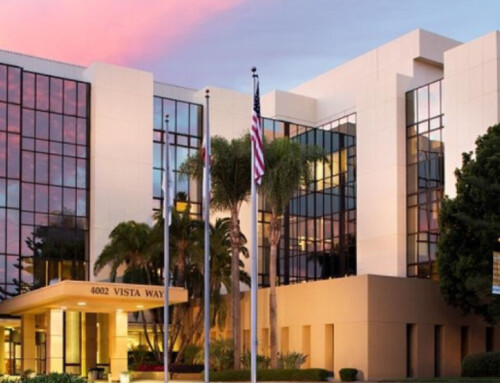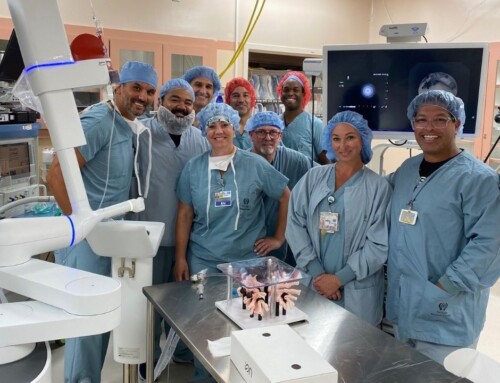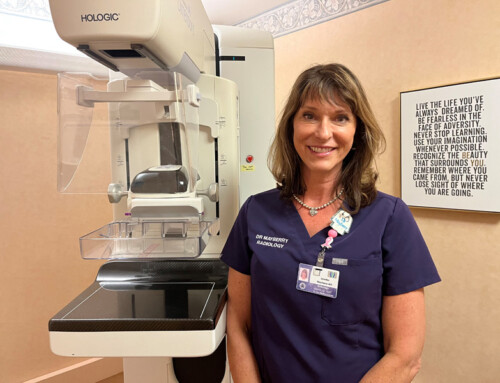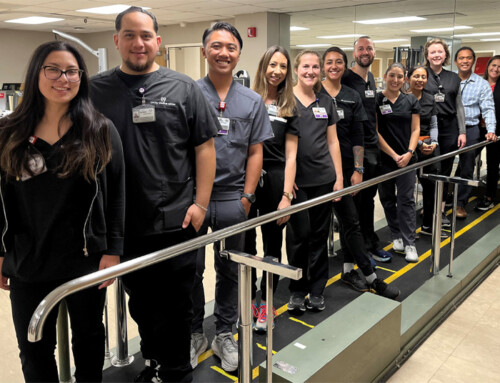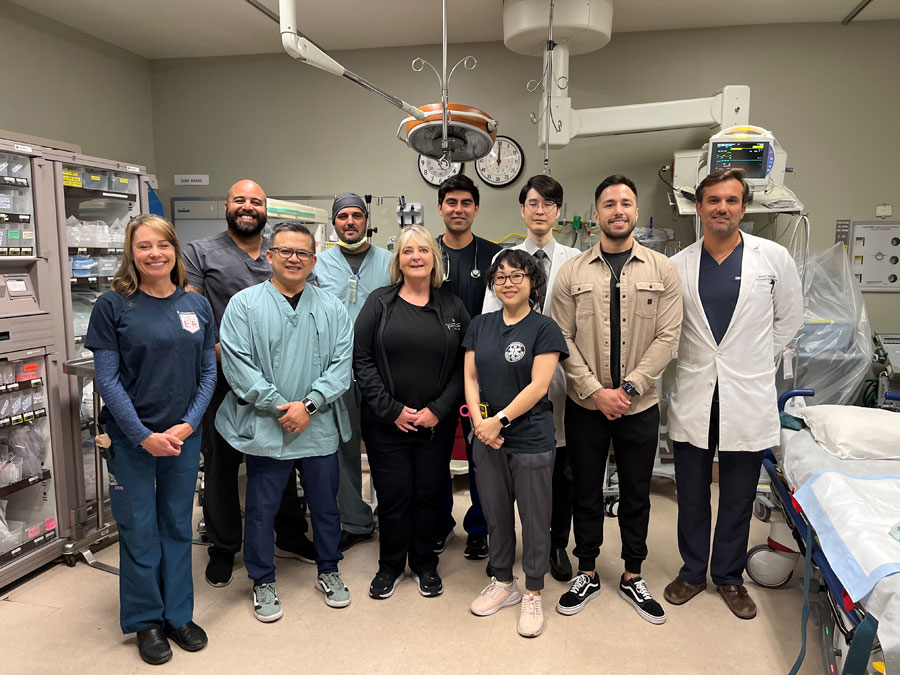
Stroke Awareness Month
Stroke: Treatable and Preventable
A stroke, commonly called a brain attack, most often occurs due to a blockage or rupture in a blood vessel in the brain. According to the American Stroke Association, an ischemic stroke is caused by a clot that is blocking the blood supply to the brain. A transient ischemic attack (TIA), also known as a mini stroke, results from a temporary, but serious clot. While the symptoms may be temporary, it is critical that TIAs be treated seriously as they often indicate an increased risk of strokes in the future. Ischemic strokes have many different causes: 1) Atherosclerosis – a build-up of fats and cholesterols within the walls of blood vessels; 2) Heart disease – especially from abnormal heart rhythms such as atrial fibrillation; and 3) Small vessel disease – smaller strokes that occur due to common risk factors such as hypertension, high cholesterol, and diabetes. Hemorrhagic strokes also have several different causes, with the most common being from aneurysms that rupture and high blood pressure.
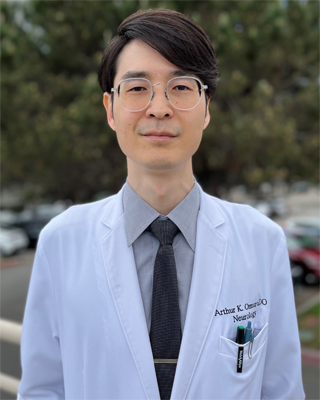
“There are subtle differences in the B.E.F.A.ST. warning signs and symptoms that manifest with each type of stroke,” said Arthur Omuro, DO, a board-certified vascular neurologist and neurohospitalist and Stroke Director at Tri-City Medical Center (TCMC). “For example, a severe, sudden-onset headache often described as a ‘thunderclap’ is more common with a hemorrhagic stroke, while being exceedingly rare in ischemic strokes. When patients come to the Emergency Room (ER) with any of these symptoms, it can be difficult to differentiate the type of stroke until they have a computed tomography (CT) scan. Once we know which one they are experiencing, we can perform any necessary additional tests and determine how best to treat or manage it.”
“Anyone experiencing symptoms should come to the ER immediately as time impacts treatment and the amount of possible tissue damage,” added Dr. Omuro. “There is only a 4.5 hour window during which a patient can receive an IV injection of recombinant tissue plasminogen activator (tPA), a clot-dissolving drug, for it to be safe and effective. At Tri-City, we use tenecteplase (TNKase) which is the only other alternative that has been studied. TNKase has subtle benefits over tPA that allows it be given as a singular dose to ensure that its therapeutic effects are maximized. With a catheter- based thrombectomy we have up to 24 hours of leeway in terms of treating a potentially devastating stroke, but patients still need to seek immediate medical attention to receive appropriate care.”
Tri-City was the first hospital in North County to earn the Thrombectomy-Capable Stroke Center (TSC) certification from The Joint Commission, in collaboration with the American Heart Association/American Stroke Association (AHA/ASA). This means the hospital has met rigorous standards for performing and caring after endovascular thrombectomy (EVT), a specialized interventional procedure that can save lives by removing blood clots from the brain during an ischemic stroke.
“The medications or surgical options for treating a hemorrhagic stroke depend on the location and amount of bleeding,” said Dr. Omuro. “Our goal is to prevent further bleeding, reduce pressure on the brain and provide supportive care to prevent neurologic deterioration so patients have the best chance for recovery.”
The Centers for Disease Control and Prevention (CDC) reports that every year, about 800,000 people in the United States have a stroke and about 1 out of 4 of those strokes are recurrent strokes. “Finding out the cause of a stroke or even a TIA is quintessential to prevent future strokes,” said Dr. Omuro. “This starts with regular visits to a primary care physician and other stroke care doctors to identify and continually monitor common risk factors such as high blood pressure, high cholesterol, obesity, diabetes and heart disease. Age, family history, race and gender must be factored in as well. The risk for stroke is nearly twice as high for black people as it is for white, and it increases with age. Women have a higher risk for stroke than men.”
“As there are many different causes to both ischemic and hemorrhagic strokes, the management in terms of preventative measures and medications also need to be specifically tailored to the individual patient. One regimen that is effective for one patient may actually be harmful to another, and that is why having follow-up care with a neurologist is vital.”
“In addition to understanding and managing the cause, I cannot emphasize enough the importance of education and awareness to maximize secondary stroke prevention,” added Dr. Omuro. “While medical advances have allowed neurologists to treat patients with what otherwise would have been permanent, debilitating stroke, there are still too many cases where the symptoms of stroke are not recognized or patients arrive to the hospital too late for treatment. That is why I encourage patients to work with their health team, know the B.E.F.A.ST. warning signs and read the American Stroke Association’s 2021 Guideline for the Prevention of Stroke to learn more. Although it may take time, with rehabilitation, medications and lifestyle modifications, patients can also overcome many of the effects of a stroke and have a good quality of life.”
B.E.F.A.S.T. warning signs:
- Balance: signs are dizziness, sudden trouble walking, or loss of balance
- Eyes: signs are trouble seeing or a sudden change in vision
- Face: one side of a person’s face droops, resulting in an uneven smile
- Arms: one arm drifts downward when a person tries to raise both arms
- Speech: a person’s speech is slurred when asked to repeat a simple phrase
- Time: every second counts – call 911 immediately
Click to learn more about stroke awareness and the services offered at Tri-City Medical Center’s Stroke Care Center.
To learn more about the Family Medicine Services offered at Tri-City Medical Center, call 855-222-8262.
To learn more about the Primary Care Services offered at Tri-City Medical Center, call 855-222-8262 to be referred to a Tri-City Primary Care physician.

